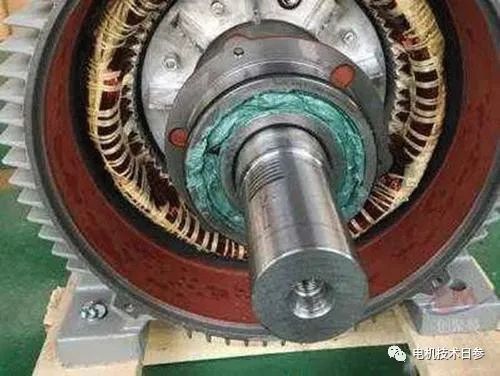Bearing system reliability is always a hot topic in electric motor products. We have talked a lot in previous articles, such as bearing sound problems, shaft current problems, bearing heating problems and so on. The focus of this article is the clearance of the motor bearing, that is to say, under what clearance state the bearing works more reasonably.
For a bearing to function well, radial clearance is very important. General principles of control and mastery: The working clearance of ball bearings should be zero, or have a slight preload. However, for bearings such as cylindrical rollers and spherical rollers, a certain amount of residual clearance must be left during operation, even if it is a small clearance.
Depending on the application, a positive or negative operating clearance is required in the bearing arrangement. In most cases, the working clearance should be a positive value, that is, when the bearing is running, there is a certain residual clearance. On the other hand, there are many applications that require negative operating clearance – ie preload.
The preload is generally adjusted during installation at ambient temperature (that is, completed during the design and manufacturing stages of the motor). If the temperature rise of the shaft is greater than that of the bearing seat during operation, the preload will increase.
When the shaft is heated and expanded, the diameter of the shaft will increase and it will also elongate. Under the influence of radial expansion, the radial clearance of the bearing will decrease, that is, the preload will increase. Under the influence of axial expansion, the preload will be further increased, but the preload of the back-to-back bearing arrangement will be reduced . In a back-to-back bearing arrangement, if there is a given distance between the bearings and the bearings and related components have the same coefficient of thermal expansion, the effects of radial expansion and axial expansion on preload will cancel each other out, so preload will not occur Variety.
The most important functions of bearing preload include: improving rigidity, reducing noise, improving the accuracy of shaft guidance, compensating for wear during operation, prolonging working life, and improving rigidity. The rigidity of a bearing is the ratio of the force acting on the bearing to its elastic deformation. The elastic deformation caused by the load within a certain range of the preloaded bearing is smaller than that of the bearing without preload.
The smaller the working clearance of the bearing, the better the guidance of the rolling elements in the no-load zone and the lower the noise of the bearing during operation.Under the effect of preload, the deflection of the shaft due to the force will be reduced, so the accuracy of the shaft guidance can be improved. For example, pinion gear bearings and differential gear bearings can be preloaded to improve rigidity and precision of shaft guidance, making the meshing of gears more precise and stable, and minimizing additional dynamic forces. So there will be less noise during operation, and the gears can have a longer working life. Bearings will increase the clearance due to wear during operation, which can be compensated by preloading. In some applications, the preload of the bearing arrangement can improve the reliability of operation and prolong the service life. Proper preload can make the load distribution in the bearing more even, so it can have a longer working life.
When determining the preload in a bearing arrangement, it should be noted that when the preload exceeds a certain established optimum value, the rigidity can only be increased to a limited extent. Because the friction and the resulting heat will increase, if there is an additional load and it acts for a long time, the working life of the bearing will be greatly reduced.
In addition, when adjusting the preload in the bearing arrangement, no matter the amount of preload is determined by calculation or experience, its deviation must be controlled within a certain range. For example, in the adjustment process of tapered roller bearings, the bearing should be rotated several times to ensure that the rollers are not skewed, and the end faces of the rollers must have good contact with the ribs of the inner ring. Otherwise, the results obtained in the inspection or measurement are not true, so that the actual preload may be much smaller than required.
Post time: May-10-2023


